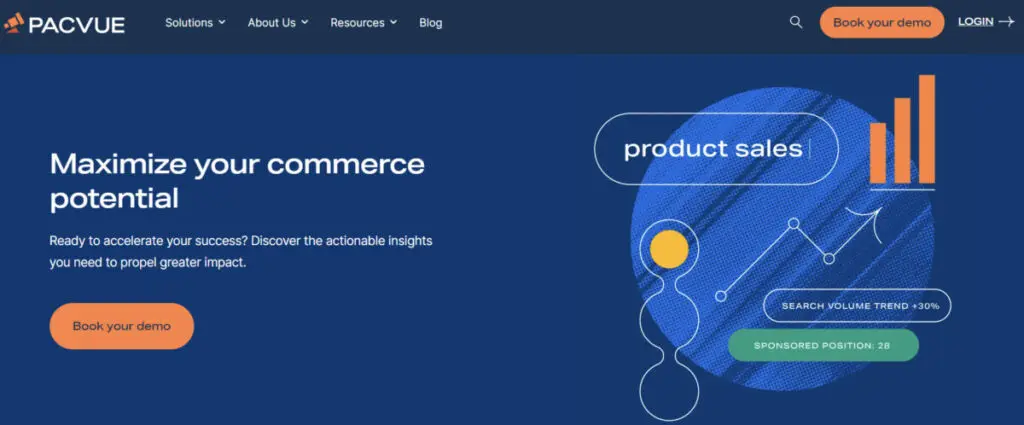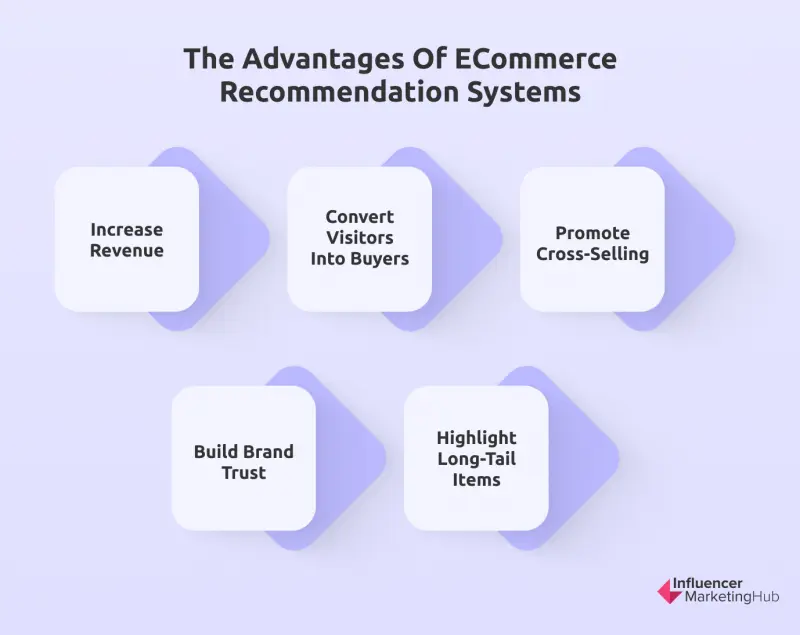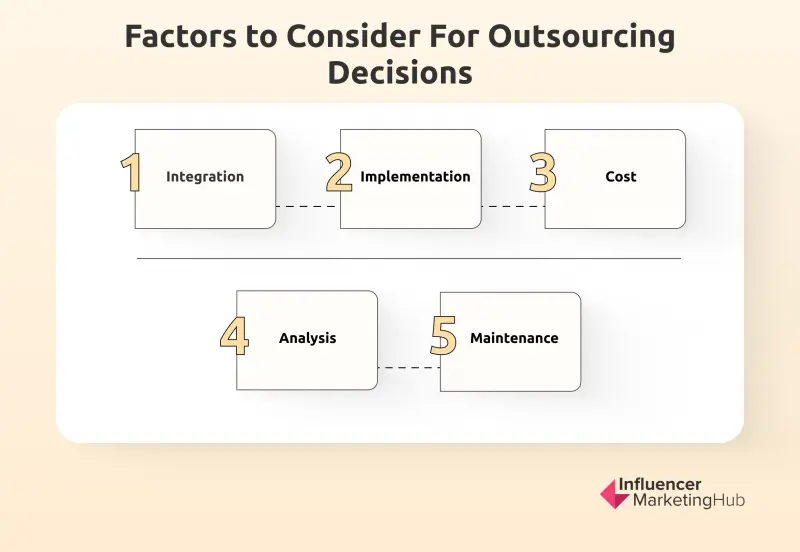Say you've seen Notting Hill on Netflix. The streaming service then suggests a variety of rom-com movies for you to watch next. Or perhaps you just read The Silent Patient by Alex Michaelides on your Kindle. And now the eReader starts promoting thrillers to you. Maybe you bought a silicone baking mat from Amazon, and sure enough, the next time you log in, Amazon recommends baking tools to you in all shapes and sizes.
How did these technologies get so smart that they anticipate what you might need next? The answer is recommender systems (RS). These systems use algorithms to identify related products and audiences based on customer behavior.
A Helpful Overview on eCommerce Recommendation Systems:
Recommendation System, In a Nutshell
A recommendation system is a subtype of information filtering system that figures out how a user would rate or prefer an item. It's a tool that runs a sequence of algorithms, analyzes data, and sometimes uses artificial intelligence (AI) to come up with recommendations. In general terms, a recommendation system is an algorithm that suggests relevant products to customers.
The system provides personalized suggestions to each visitor rather than general recommendations using machine learning. Like a seasoned marketer who is well-versed in upselling and cross-selling strategies, a recommendation system can help increase revenue for businesses. It provides suggestions based on data, including customers' past purchases, product reviews, and user ratings.
These days, a robust recommender system can do double duty as a personal shopper and a shopping assistant. Sophisticated eCommerce recommender systems will ensure that the items you want are easily accessible and prominently displayed in your favorite retail stores.
Recommendation Systems at Present
We now live in the era of online shopping. But despite the fast growth of eCommerce, brick-and-mortar stores still have the upper hand when it comes to building customer relationships. As a result, online recommendation systems were created to better interact with customers.
Amazon's recommender system (RS) is widely regarded as one of the best on the market. Enterprise eCommerce solutions like Pacvue include recommendation engines. And while the concept of a recommendation system may seem current, it is not.
The notion of using computers to choose the best item for the consumer has existed since the inception of computing. The first implementation of the RS concept emerged in 1979 in the form of Grundy, a computer-based library that suggested books to its users. The Tapestry, the first commercial RS, was launched in the early 1990s. In response to people's struggles to access and pick relevant data from the internet, Tapestry took cues from a wide range of fields, including cognitive science, pattern recognition, predictive theory, business management, and marketing technology.
As a result, the recommendation system emerged as a business opportunity, using the wealth of information available and expertise to generate profit. It has evolved into an essential component of any online store because it provides product recommendations to the user while also acting as a virtual salesperson. This streamlines the buyer's journey and optimizes their overall shopping experience. Almost all streaming services, social networks, online stores, and app stores already use some kind of recommendation algorithm.
Recommender Systems for eCommerce
You may have bought something from Amazon or another eCommerce shop at some point in your life. And you may have seen a section on the site that says, "Customers Who Viewed This Item Also Viewed..." and then proceeds to enlist products related to the original item.

Source: vwo.com
That section (on Amazon) is an excellent example of a recommender system. Amazon's RS aims to attract prospects to your business. It also raises your shop's average order value by suggesting products that complement or match the recently purchased item on your online store. For example, if a user recently bought a pillowcase from your store through Amazon, the site's RS will suggest blankets or quilts to the user to go with their purchase.
The use of recommender systems, sometimes known as product recommendation engines, enables you to better cater to your customer's individual needs by highlighting related products and services. The algorithm will analyze user activity and provide suggestions based on what it thinks the user would like. Users are expected to take note of these suggestions and purchase other items from the set.
The suggested items are recommended based on several factors, such as:
These insights are then leveraged to predict the customer's future buying patterns. The use of an eCommerce recommendation system, when done correctly, can boost the average spending of visitors and increase brand awareness.
The “Magic” Behind Recommender Systems
The magic is in the algorithm. Some, but not all, recommenders use machine learning to determine what clients want and to suggest the best products. The most important thing to remember is that RS machine learning relies on a set of data and information. The more insights the system has, the more accurate the recommendations will be.
The two types of user data supplied to the RS are:
- Implicit: Users generate these pieces of data spontaneously and are related to their navigation behaviors, such as clicks and searches. If a client often buys clothes from your online shop, your recommendation engine will calculate and hint that your buyer is keen on fashion. As a result, the system will mark the buyer's profile with fashion-related tags.
- Explicit: Users provide these pieces of information voluntarily provide in response to a question or request for details. They are the feedback left by clients in the form of star reviews and written comments. This form of data is more accessible and transparent.
Information and insights are drawn from a variety of sources. These include the items users browsed, the products they added to their shopping cart but later discarded, their shopping history, and their search variables. The level of customization of these recommendations is also affected by the intent of the platform, the amount of data it receives, and the way the system is built.
When customizing a user's experience, the system uses information about the user's past actions and preferences (page visits, user ratings, and search queries) to make suggestions that are more relevant to the user's interests.
The acquired data involves three factors:
- The Recommended Products Or Services
- The User Who Will Be Influenced By The Recommendations
- Past Platform Users
Above all, a recommendation system collects data and, as a corollary, simplifies the decision-making process by displaying and proposing choices. These choices are not limited to items. They can be a service, a form of content, or even a person or a brand, like friend suggestions on social media.
The Advantages of eCommerce Recommendation Systems
Amazon spent years perfecting its RS for good reason. As listed below, recommendation systems offer a variety of advantages.
-
Increased revenue.
Recommendation systems boost sales. According to a report, 35% of overall Amazon purchases are driven by its RS. It has been proven that providing the right recommendation choices can improve upselling revenue and make shopping better for the customer.
-
Convert visitors into buyers.
Webstore visitors often explore without purchasing. It's a common customer behavior; they're virtual window-shopping. Through relevant suggestions, eCommerce RS can help visitors find the items they want to buy.
-
Promote cross-selling.
Cross-selling is enabled by recommender systems, which expose buyers to complementary items. If the suggestions are appropriate and helpful, the average transaction size will increase. Your online store can offer more items based on what's inside the buyer's cart at checkout.
-
Build brand trust.
eCommerce recommender systems create value-added and close brand-buyer engagement. Online retailers put effort into understanding their customers, putting this information to use via recommender systems, and developing individualized shopping experiences for each customer. In response, the loyalty of a buyer grows the more they use the recommendation system.
-
Highlight long-tail items.
Long-tail commodities are items or niches that are hard to find. They are extremely specific and unique, and only a small number of people actively look for them. RS helps them find items that are not in their local vicinity and that they wouldn't have access to otherwise. The system also helps businesses promote these items more effectively.
Filtering Types in eCommerce Recommendation Systems
Different recommender systems use different data processing techniques. Some RS use data, information retrieval, and pattern matching. Other algorithms integrate these methodologies with AI and machine learning. There are two main filtering types used by the system, regardless of the combination of methods used. They are content-based filtering and collaborative filtering.
Content-based filtering
This type of filtering is all about the user, as well as the features and parallels between content or items. Based on the content (attribute/tag) of items the user has already searched for, relevant products will be displayed. In this technique of filtering, items are marked with certain keywords. Through content, the system tries to determine what the user wants by going through its database for potential matches.
This occurs when a recently searched or purchased item is presented. For example, if a customer has bought a romance novel from your online store before, your RS will assume that they will buy another one with similar features.
Pros | Cons |
No need for other users' data since the recommendation is unique to a particular user | To some degree, item feature extraction is hand-engineered, which requires proficiency in the subject |
Scaling to a large number of users is simplified | Limited ability to expand on the user's current interests |
Specific options are based on available history |
Collaborative filtering
The collaborative approach emphasizes the interdependence between users and products. What constitutes a “similar” item is influenced by how customers interpret the similarities between different items. The premise of collaborative filtering is that two people who liked the same item at some point in the past would presumably like another comparable item in the future. The best example of this method is when you see a website's “Customer who brought this also brought” section.
There are two types of collaborative filtering. User-based underpins users' similarities, while item-based relies on item similarities.
Pros | Cons |
Works effectively even with limited data | Cold Start Problem or the difficulty in handling added items |
Discovery of new-to-me items based on the past purchasing habits of other users | Limited side features |
No domain knowledge required |
Hybrid filtration
Many RS are exploring hybrid filtering as a new technique. It incorporates both content and collaborative methods. It provides the system with the capability to understand more precise interactions between people and products. This non-linear filtering technique is also less likely to overstate the user's preferences.
Outsourcing Your Webstore’s RS via Pacvue
Amazon, the largest online retailer in the world, is a natural case study for anyone looking into recommendation systems. You may remember seeing recommendations tailored to your preferences when you shop on Amazon. When you click on an item, you'll get choices for similar or complementary items. When you add an item to your cart, you'll be able to see what other customers have bought right next to it.
Amazon's RS is a success story mainly because the eCommerce site has a lot of resources and a workforce to hone the system. Creating your own recommendation system is feasible, but it's not a walk in the park, especially if you're just starting your retail store or you have a restricted budget.
Fortunately, in today's climate, any virtual shop may have its own system, thanks to dedicated third-party services. Professional assistance tremendously helps to efficiently establish a recommender system in your web shop. Some work on unique projects for each retailer, which takes more time and resources. Others adhere to a standard structure that can be easily customized for any store.
When outsourcing a service for your shop's RS, keep the following factors in mind:
Integration
Check to see if the recommender system is compatible with your eCommerce platform. If not, figure out if the integration is possible, what steps need to be taken, and if the delay was necessary.
Implementation
Time is money. Some service providers offer a more cost-effective option, but it takes time to set up. Others use more sophisticated software that can scale, but they are more expensive. If your budget is small, find a compromise. The sooner your system is operational, the sooner your shop will see the benefits.
Cost
In relation to the time of implementation, the price of the system varies between cost-effective, which often uses older software, and expensive, which uses sophisticated technology such as AI.
Analysis
Your provider must have a results analysis tool to monitor the solution daily and accurately. This way, you'll know whether your strategy is working or if you need to adjust tactics.
Maintenance
Check how much maintenance and manual configurations the outsourced RS needs. Fully automated systems decrease personnel expenses and work.

Source: pacvue.com
Pacvue is a service that can help your store implement a recommendation system. Brands and vendors can use the Pacvue platform to improve their digital shelf presence, sales, and marketing initiatives across many marketplaces. Pacvue integrates end-to-end retail data with the resources required to carry out specified actions. The Pacvue enterprise suite assists enterprises and merchants in expanding their operations across Amazon, Walmart, Instacart, Criteo, CitrusAd, Kroger, and other marketplaces.
Final Thoughts
Every online shop needs a recommendation system. Having an RS can help your brand make a name for itself in the eCommerce world, regardless of the size of your company. The eCommerce recommender system doesn’t only help in growing your revenue but also increases customer satisfaction, fosters brand loyalty, and stays ahead of the competition.
Take the time to check recommender system service providers like Pacvue to see which technique works best for your business. Whatever it is, be sure to include an RS in your store.









